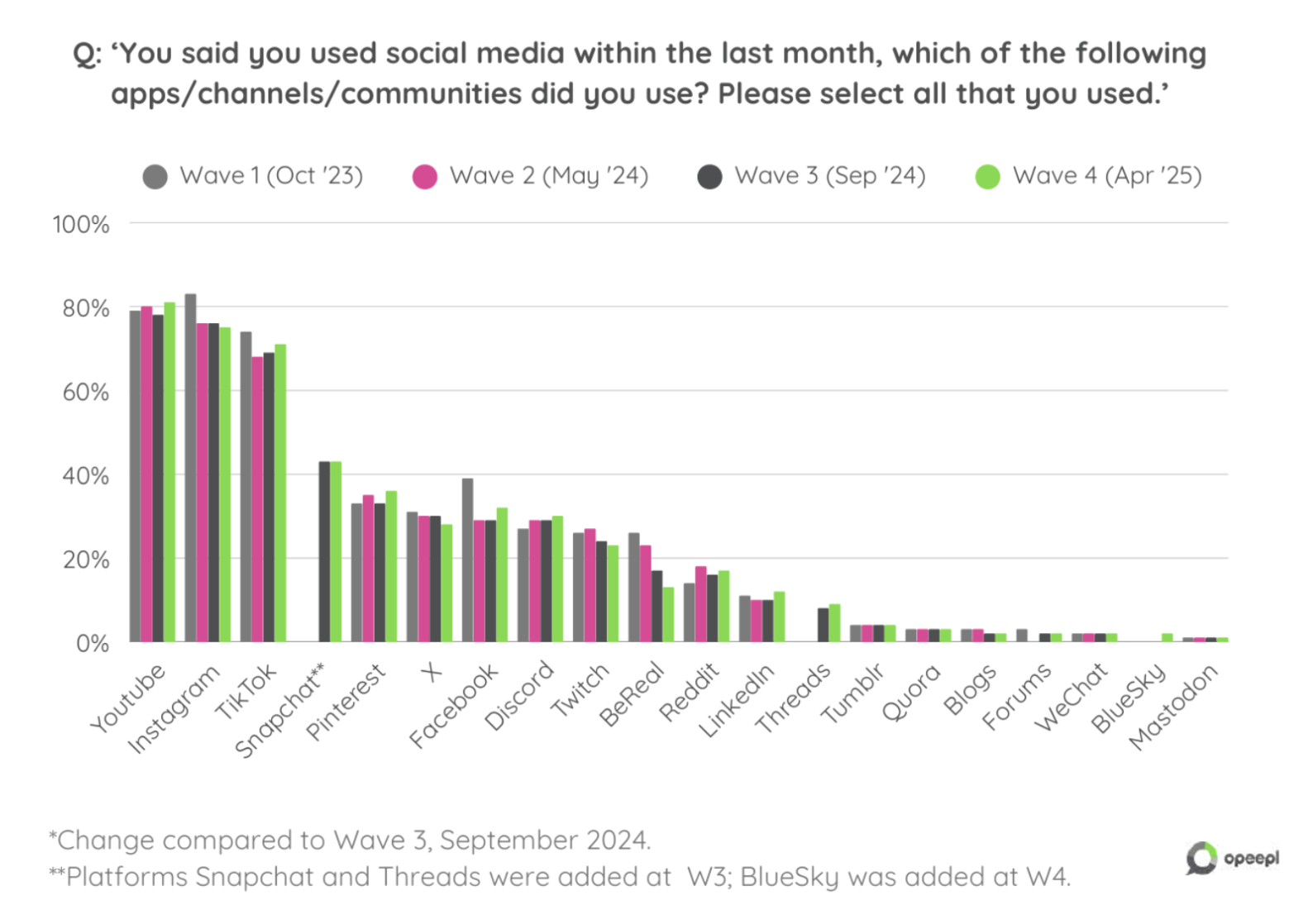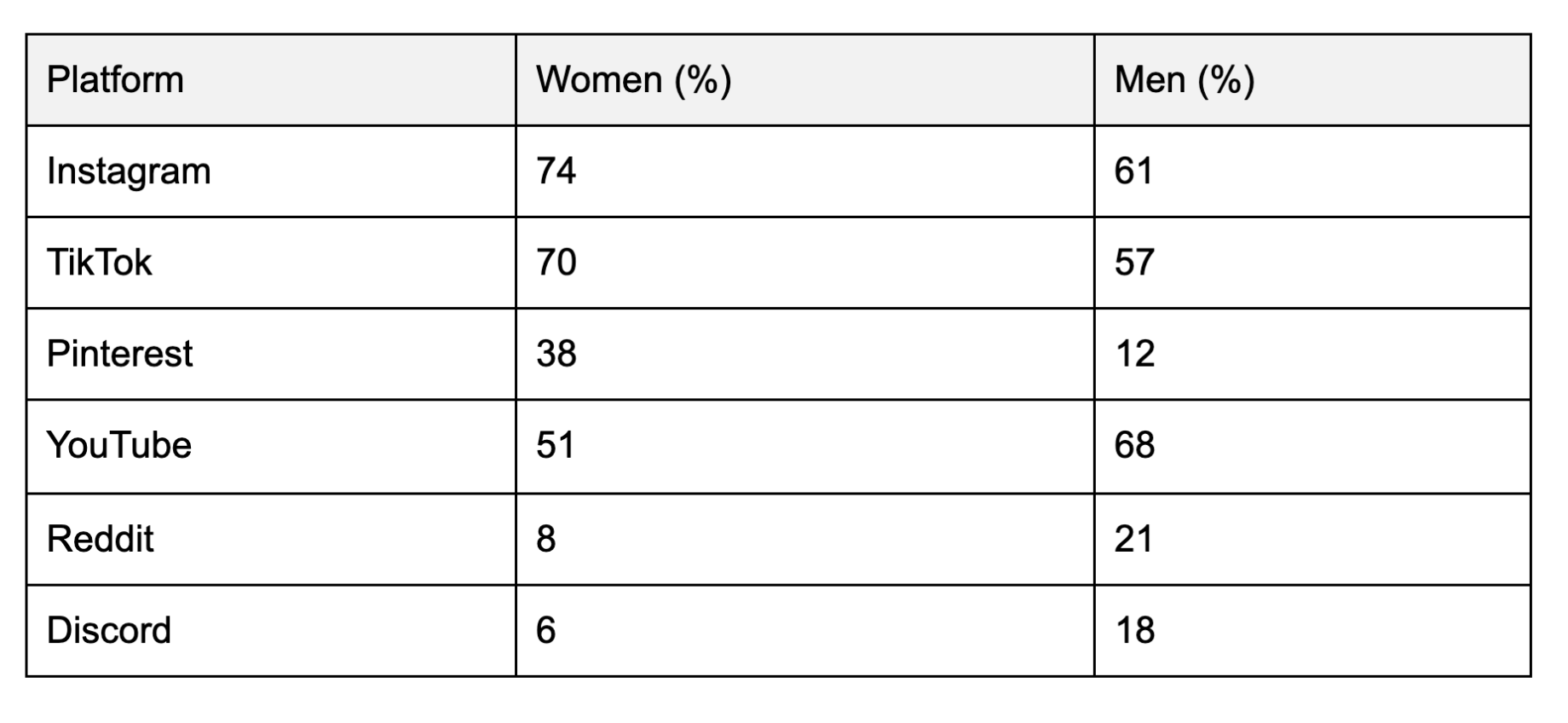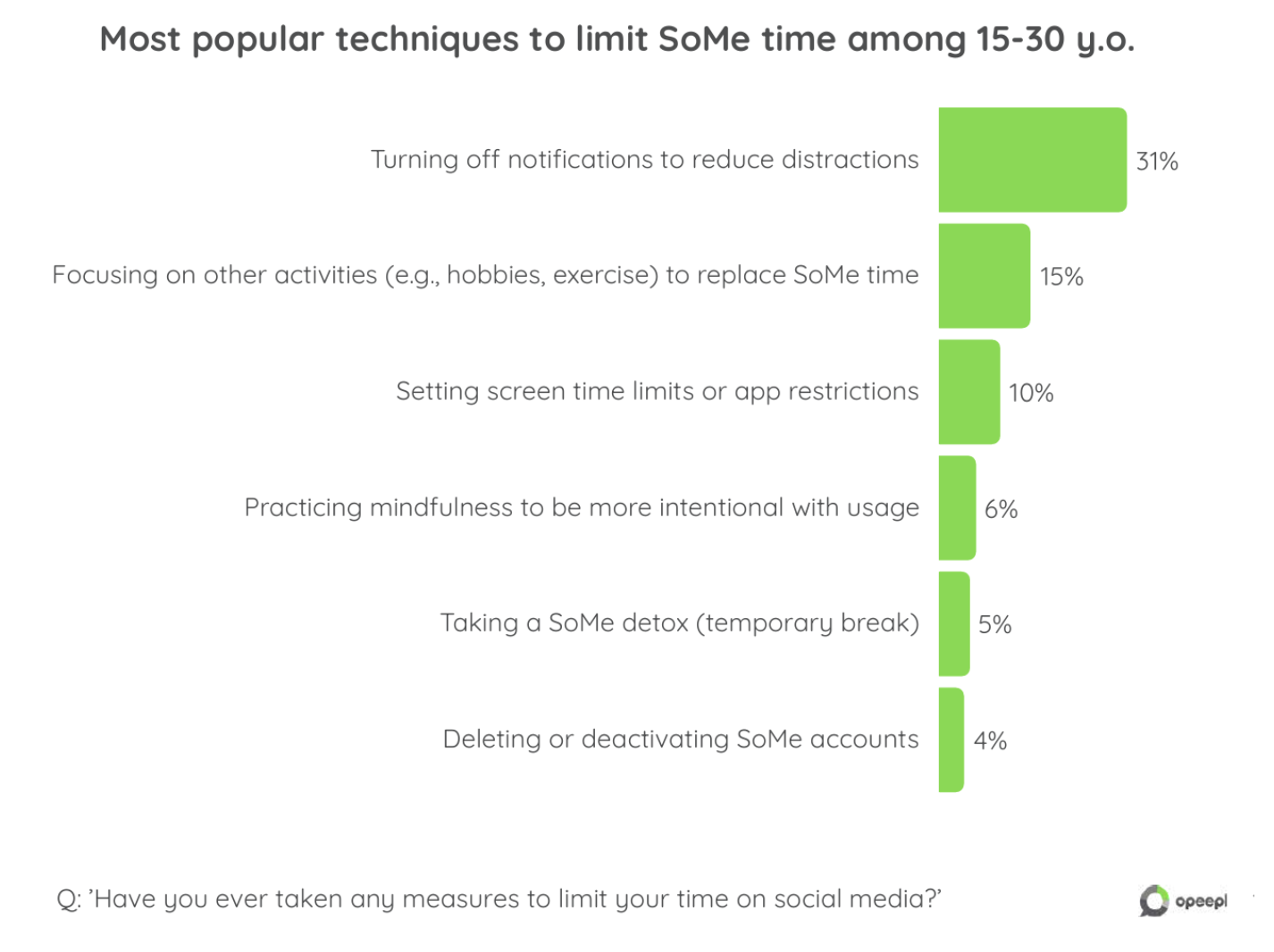
Social Media Habits of Gen Z in 2025: What They Use and How Long
Published: October, 2025
Social media is still the heartbeat of daily life for young people, but the rhythm is changing. What once felt like endless scrolling is now becoming a space for expression, learning, and connection, but also self-awareness.
The Youth Pulse Wave 4 study reveals that 96% of 15–30-year-olds spend several hours every day on Instagram, TikTok, and YouTube, yet many admit they are rethinking how that time shapes their moods, focus, and well-being. They still love the fun, the trends, and the sense of belonging, but they are also learning where to draw the line.
This generation is not just doom scrolling the social media; they have redefined it too. They want connection without exhaustion, creativity without comparison, and entertainment without losing control.
Let’s dive in to explore more!
Which Platforms Rule Youth Life
The data paints a clear picture: Instagram (75%), TikTok (71%), and YouTube (81%) are the top three platforms used by young people across Europe.
Snapchat follows at 38%, while Facebook lags behind at 30%, which shows how much the social media landscape has shifted toward video-first and visual platforms.
TikTok continues to rise, especially among those aged 15–19, where usage jumps to 72%. Meanwhile, YouTube holds strong across all age brackets and proves it’s still a place for learning, entertainment, and long-form engagement.
The data paints a clear picture:
YouTube (81%), Instagram (75%), and TikTok (71%) dominate Gen Z’s online time.
Snapchat (38%) remains popular for quick chats, while Facebook (30%) continues to decline among younger audiences.
TikTok is strongest among 15–19-year-olds (72%), while YouTube holds its ground across all age groups, proving it’s still the go-to for both entertainment and education.
Why do they use these platforms?
Because it’s where everything happens: discovering trends, chatting with friends, learning new skills, and increasingly, shopping.
“I can’t imagine a day without it,” said one respondent - but it’s less about escape and more about connection.
Younger users (15–19) are the heaviest users, often crossing the 4-hour mark. For many, it’s a blend of chatting, consuming short videos, gaming clips, and browsing trends.
Older youth (25–30) spend slightly less time, often because of work or time limits, but still use social media daily.
Try asking one to quit for a week, and you’ll likely get a laugh. For this generation, social media is social life.
Do They Think They Spend Too Much Time?
Most say yes.
61% of Gen Z believe they spend too much time online.
21% think it’s about right.
Only 5% wish they had more time for social media.
This mix of connection and caution defines their relationship with tech in 2025—they know its value but also its impact.
How Gen Z Is Taking Control
Instead of quitting social media, Gen Z is reshaping how they use it.
Here’s how they’re setting boundaries:
41% turn off notifications to stay focused
34% use in-app screen time limits
28% delete apps temporarily when overwhelmed
25% schedule offline hours—especially before bed
22% track daily screen time to stay mindful
This shows a growing sense of digital self-control.
Young people aren’t rejecting social media—they’re using it on their own terms.
The takeaway?
Everyone’s online, but they use social media for different emotional needs. One group scrolls for creativity; the other scrolls for curiosity. Both are looking for connection - just in their own way.
It’s a reminder that while everyone’s online, how they use social media differs.
How Much Time Do They Spend Online
According to the study, the average youth spends 2–4 hours daily on social media.
31% say they spend 2–3 hours,
29% spend 3–4 hours, and
17% admit to 5+ hours a day.
Not so surprisingly, only 8% manage to keep it below an hour.
Gender Gaps: Different Platforms, Different Purposes
If you ever feel like your social feeds look totally different from your friends’, you are not imagining it. The report shows a clear divide in how men and women use social media. And it’s not just about preference, it’s about purpose.
Women still rule the visual spaces. Instagram leads the way, with 74% of women active there compared to 61% of men. TikTok follows closely, 70% of women scroll and post there, while 57% of men do the same. Even Pinterest, known for inspiration boards and creative ideas, shows one of the widest gaps: 38% of women use it versus just 12% of men.
Men, on the other hand, dominate platforms built around learning, gaming, and debate. YouTube tops their list, used by 68% of men compared to 51% of women. They are also far more active on Reddit (21% vs. 8%) and Discord (18% vs. 6%), spaces where conversations and communities thrive.
It’s easy to see why. While women use social media to share, express, and inspire, men often use it to discuss, explore, and compete. But here’s what’s fascinating: both groups are using these platforms to connect. They just do it in different ways. One scrolls for creativity, the other for curiosity.
Here’s a table for your ease:
And that shift is a wake-up call for brands:
If you want Gen Z’s attention, make it worth their time. Authenticity, value, and real connection beat flashy content every time.
The opportunity isn’t to grab attention - it’s to deserve it.
Final Thoughts
The Youth Pulse Wave 4 study makes one thing clear:
Gen Z hasn’t left social media. They’ve learned to use it smarter.
They know when to scroll, when to stop, and which platforms add real value.
Instagram and TikTok may still dominate, but the story beneath the numbers is one of awareness, self-control, and choice.
For brands, the message is simple:
If you want to connect with youth in 2025, focus on meaning over manipulation. Attention is no longer automatic, it’s earned.
Want a deeper look at how young consumers are shaping the future of digital behavior?
👉 Watch our on-demand webinar: Youth Trends to Watch in 2025
Discover more trends among 15-30 y.o. in Youth Pulse Report
Opeepl Youth Pulse is a bi-annual study that keeps pulse on the latest developments in the youth market. Discover key youth trends in consumer confidence, media habits, attitudes, values, and five major categories: Food, Beverages, Alcohol, Fashion, and Personal Care.





